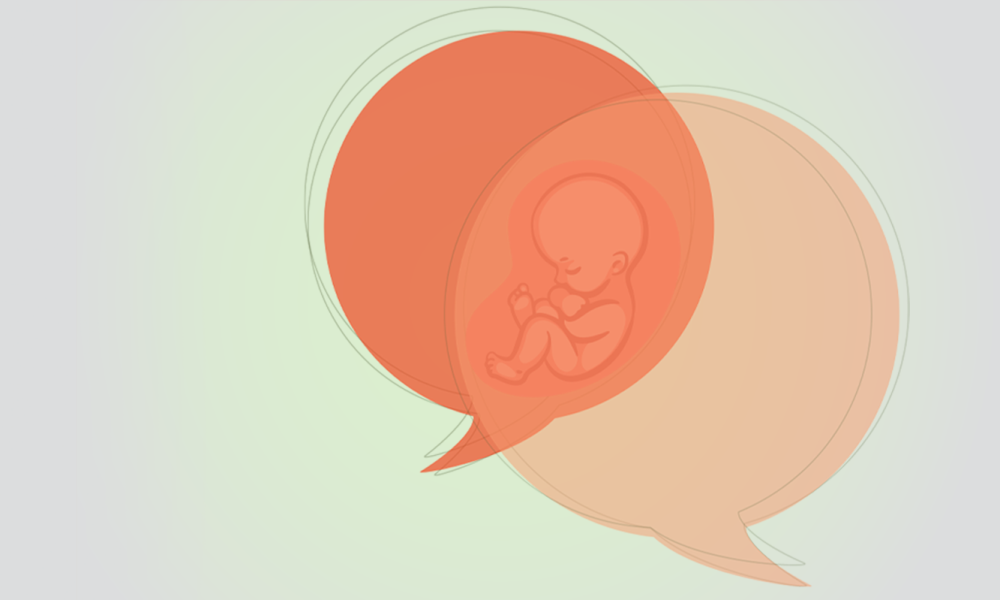
Effectively sharing the pro-life message
and Promoting a Culture of Life
and Promoting a Culture of Life
It’s been more than a full year since Dobbs v. Jackson Women’s Health Organization changed the landscape with respect to abortion in America. The decision by the U.S. Supreme Court that nullified Roe v. Wade not only restored to the states the right to make decisions about abortion in their jurisdictions, but it also has localized the civic conversation about abortion.
Bishops and diocesan leaders once again shape the narrative about abortion at the state level. Just as the Church took the lead in the national fight against Roe, it is now helping to define the issue at the state level as various states codify their abortion laws.
Through its standing committee on Pro-Life Activities, the USCCB advises dioceses to combat the evil of abortion by focusing on the precious gift of life that each human being represents. As a practical guide for Catholic communicators, the committee provides resources and direction to help craft positive messages that promote a culture of life. Implementing the USCCB’s general guidelines, here are five ways to effectively communicate about abortion:
Teach the doctrine of life in simple, clear language.
The USCCB’s simple graphic, The Truth About Abortion and Women’s Health, is a great example of a strong, focused infographic to combat pro-abortion narratives around abortion and healthcare. It’s especially helpful to convey the teachings of the Church in plain language that dispels myths, such as those about protecting the life of the mother. Simple, factual statements, rather than complex language about theological reasoning, help Catholics and others understand what the Church really says about abortion.
Focus on the Church’s role in supporting pregnant women in crisis.
Seek out activists whose ministries demonstrate the Church’s teachings by directly assisting pregnant women in need. For example, the Diocese of Sacramento’s Catholic Herald featured young people leading a “baby shower” for women in three communities. Images of teens and young women assisting families also convey the “pro-life generation” of young Catholics who put their beliefs into action.
Similarly, the Diocese of Austin’s Catholic Spirit magazine highlighted a parishioner whose personal ministry of assisting pregnant women became a network of 26 support centers called Gabriel Projects. The uplifting story demonstrates how one Catholic’s compassion ignited the commitment of countless volunteers to assist vulnerable pregnant women.
Demonstrate how the Church responds in concrete ways to women in need of healing.
One crucial way to communicate about Christ’s message of forgiveness and mercy is to tell stories of healing and reconciliation. The Diocese of Reno’s High Desert Catholic included a feature about Project Rachel to help connect post-abortive women with emotional, psychological and spiritual support. Another feature in the same publication listed the many ways in which the diocese supports women in every circumstance, from prenatal care and assistance to adoption services, counseling and natural family planning.
Give people positive ways to be involved in the political process.
The post-Roe political landscape will require no less energy and commitment to the cause than pro-lifers have shown in the decades since 1972, but now, those battles will take place locally. To inspire people to action — and keep the focus on positive advocacy — content should show how activism leads to spiritual renewal.
In the Diocese of Gaylord’s FAITH along Michigan’s 45th Parallel, readers were offered clear guidance in evaluating Michigan’s unregulated abortion proposal that ultimately codified abortion rights in the state’s constitution, including a straightforward Q&A for voters followed by a compelling Christian witness story.
The Diocese of San Jose’s Valley Catholic magazine included a feature about a young woman whose experience at 40 Days for Life sparked a renewed commitment to her faith and the cause of the unborn.
Show how Church teaching is consistent across the spectrum of life.
One way to reach people is to show how the Church’s teaching about the sanctity of life is consistent across the board, not only on the topic of abortion. For example, a pro-life issue of a publication could also include stories about supporting prisoners on death row, protecting the elderly and disabled and caring for the homeless and others who live on the margins.
The Diocese of Charleston’s The Catholic Miscellany featured a heartwarming story about a member of the Knights of Columbus with autism that focused on his inherent dignity and the value he contributes to his brother Knights.
A feature in The East Texas Catholic, the publication of the Diocese of Beaumont, highlighted the story of a religious sister whose prison ministry serves those on death row. The story helped readers to gain compassion and mercy for their incarcerated brothers and sisters.
